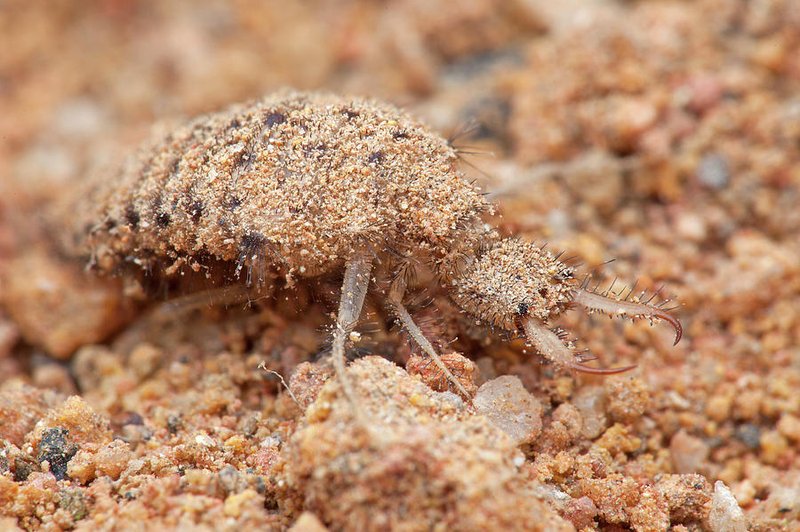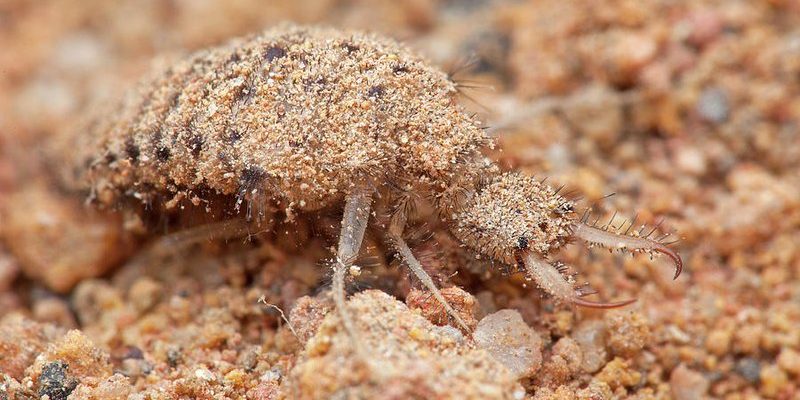
Let me explain. Just like any predator, ant lion larvae play a crucial role in maintaining balance within their ecosystems. They help control ant populations, which can get out of hand if left unchecked. However, their predatory ways can lead to challenges, especially when it comes to biodiversity. So, how do these small but mighty larvae impact their surroundings? Let’s break it down.
Understanding Ant Lion Larvae
Ant lion larvae belong to the family Myrmeleontidae, and they’re the juvenile form of the adult ant lion. You might be wondering, what do they actually look like? Picture a small, elongated creature with a curved body and powerful jaws. They often hide in shallow pits of sand or soil, waiting patiently for their next meal. Their ambush strategy is fascinating; they can remain motionless for hours, blending into their environment like a skilled actor on stage.
These larvae are typically found in dry, sandy habitats like deserts and forest edges. They thrive in these areas and are often more common than you’d think. Their presence is usually an indicator of a healthy ecosystem, as they require certain conditions to flourish. So, next time you’re on a nature walk, keep an eye out for these crafty little predators!
The Benefits of Ant Lion Larvae Populations
Ant lion larvae offer several ecological benefits that contribute to the health of their environments.
1. Natural Pest Control
One of the most significant benefits is their role in natural pest control. Ants are abundant in many ecosystems, and unchecked populations can lead to imbalances. Ant lion larvae help keep these populations in check by preying on ants and other small insects. This natural regulation ensures that no single species dominates, promoting a balanced ecosystem.
2. Biodiversity Support
Another benefit is their contribution to overall biodiversity. By keeping ant populations in check, ant lion larvae allow other insects and plants to thrive. A well-balanced ecosystem fosters a rich variety of life, which is essential for resilience against environmental changes.
3. Soil Health Improvement
Lastly, ant lion larvae can indirectly improve soil health. They often inhabit sandy soil, which can become depleted if there’s an overabundance of certain insects. By preying on ants and helping maintain insect balance, these larvae contribute to a healthier soil ecosystem, which is vital for plant growth.
The Drawbacks of Ant Lion Larvae Populations
While there are many benefits, there are also some drawbacks to consider when it comes to ant lion larvae populations.
1. Impact on Ant Species
Ant lion larvae can significantly reduce local ant populations, which may lead to unintended consequences. Some ant species play essential roles in the ecosystem, such as seed dispersal or soil aeration. If these ants decline too much, it could negatively affect plant life and reduce biodiversity.
2. Competition with Other Predators
Another concern is how ant lion larvae compete with other predators. In ecosystems, balance is crucial. If ant lion larvae become too numerous, they can outcompete other beneficial predators for food. This can create a ripple effect, impacting the entire food web.
3. Vulnerability to Climate Change
Lastly, ant lion larvae are sensitive to environmental changes, particularly temperature and moisture levels. As climate change affects habitats, these larvae may struggle to survive or reproduce effectively. Maintaining their populations could become increasingly challenging, potentially leading to localized extinctions.
The Role of Ant Lion Larvae in Ecosystems
Now that we’ve covered the benefits and drawbacks, let’s dive deeper into their overall role in ecosystems. Ant lion larvae act as both predator and prey. While they hunt ants, they also provide a food source for birds and other larger predators. This dual role is a classic example of nature’s balance, where each species relies on others to sustain life.
Food Web Dynamics
Ant lion larvae fit seamlessly into the food web. They rely on ants for sustenance, but they are also crucial for many birds and animals that depend on these larvae as a food source. This interconnectedness means that a decline in ant lion larvae could lead to a chain reaction affecting multiple species.
Indicator of Ecosystem Health
Additionally, as previously mentioned, the presence of ant lion larvae indicates a healthy ecosystem. Their specific habitat requirements mean that when they thrive, it often signals a balanced environment. This is particularly useful for ecologists and conservationists who are monitoring ecosystem health.
Conservation and Management
Given the ecological benefits and drawbacks of ant lion larvae populations, conservation efforts are essential. To protect them, we need to ensure their habitats remain healthy and diverse.
Creating Suitable Habitats
One way to help is to promote the creation and maintenance of suitable habitats. This can be done by planting native vegetation, reducing chemical pesticide use, and maintaining sandy areas. You can even encourage local wildlife gardens that provide safe spaces for these larvae to thrive.
Research and Monitoring
Moreover, conducting research and monitoring populations can be vital in understanding how these larvae adapt to climate change and other environmental stresses. By gathering data, scientists can devise strategies to protect both ant lion larvae and their ecosystems.
Ant lion larvae may seem small, but their impact on the ecosystem is significant. They offer benefits like natural pest control, support biodiversity, and help improve soil health. However, they also come with drawbacks, such as competition with other predators and potential vulnerabilities to climate change.
Understanding the ecological benefits and drawbacks of ant lion larvae populations allows us to appreciate their role in nature. By promoting healthy habitats and supporting research, we can ensure these fascinating creatures continue to thrive, balancing the ecosystems they call home. So next time you see a sandy pit, remember the stealthy ant lion larvae lurking below, playing their crucial part in the circle of life.

